
Conventional wisdom suggests that globalization is making the art world smaller and samier. But, following a visit to Buenos Aires and arteBA where the art on show makes her laugh and cry in equal measure, KATYA TYLEVICH begs to differ.
This feature originally appeared in ISSUE 26
If I’m a fly on the wall, then I’ve landed among very good company. In their Buenos Aires home, Abel Guaglianone and Joaquín Rodríguez show off some of the 60-plus modern works on paper they own, including a Klimt sketch and a small Kandinsky ink. Contemporary Latin American artists and Argentine locals such as Fabián Burgos, Juan José Cambre and Mariano Ferrante also figure prominently in their collection.
Actually, they don’t call it that. ‘It’s not really a collection, it’s more a group of memories,’ Guaglianone and Rodríguez tell me over the hum of their champagne-guzzling guests. ‘Each one of the pieces is attached to a sensation, an occasion or emotion.’
On the eve of the opening of arteBA, the annual art fair, Guaglianone and Rodríguez are hosting a party to welcome collectors and gallerists from abroad and introduce them to local artists, some of whom are also represented in the couple’s group of memories.
The pair are antique dealers, and their home, a spacious flat in ba’s upscale Retiro neighbourhood, reflects the fact with its immaculate display of antique vases, chandeliers and furniture, which stay surprisingly unmolested, considering how many of ba’s who’s-who of art showed up tonight.The party goes on deep into early morning.
‘It is a very interesting time in Buenos Aires for art,’ they tell me. ‘Public and private institutions are more active with interesting programmes. Artists have more spaces to show their work. Old galleries are moving to new spaces, and young spaces are becoming more professional.’
This is my second time to ba in under a year. As a visitor with no previous (mis)conceptions about the contemporary art climate in Buenos Aires, I come to view the city as impressively strong in its curatorial and cultural programming. At museums, galleries and art events, I exert little effort to come across exceptional artists whom I had never heard of before (initially, I blame myself for the ignorance, then realize that others outside of ba are also clueless). An unscientific scan of attendance rates at ba art gatherings suggests that my eagerness is not on account of tourist syndrome, but rather a way of fitting in. A strange, sculptural and humorously sexy choreographed performance by Osías Yanov (VI Sesión en el Parlamento) in the main public spaces of the Latin American Art Museum, malba, draws an audience to cover every inch of breathing space. A museum attendant has to push through bodies with his own in order to create a makeshift emergency-exit strategy.
In addition to malba and many other striking art spaces and institutions, I also visit the Museo de Arte Moderno de Buenos Aires (mamba), and Fundación Proa, Ruth Benzacar Galería de Arte and Galería Nora Fisch; and, of course, arteBA, whose attendance levels are so high there should be a claustrophobia notice on the door.
Although the presence of international galleries at arteBA is purposeful and demonstrated, the most exciting component for me is the strength of the local art and the extremely personal curation of many of the participating galleries. Perhaps knowing the strong expectations of local and international visitors (some collectors, some not), arteBA cannot take the risk of ‘playing it safe’ with something its audience has already seen—here or elsewhere. Whereas ‘art’ tourism for the purpose of attending fairs sometimes tends to reinforce the feeling that the art world is small (same faces, galleries, artists), my experience in Buenos Aires reminds me that it is actually quite large, with much left to be discovered.
I say as much to the new friends I make in ba. I tell them that I am discovering local artists I had not known about, that I am coming across exhibitions the drive and narrative of which I have not experienced before.
Most take the compliment for what it’s intended to be: a compliment. They agree that ba has a rich art programme, which has seen improvements in recent years. But some take it as a veiled implication that ba is ‘far’ from the agreed-upon art hubs or norms. The implication is already on the tip of tongues, I don’t need to put it there.
Okay, so the New York—London—Basel—Venice route typically doesn’t include a layover in Buenos Aires. The city is geographically far from the art-market regulars. Art is bigger than geography, though, and so is the art market—or rather, art markets, which develop and transform owing to international differences in art climates. In regard to that, my new friends exchange sarcastic comments about the political climate of ba. In relation to the art market, high taxes and strenuous customs regulations for international art collectors give cause for local gallerists and others in the art field to get heartburn.
I ask Julia Converti, director of arteBA, to describe what, if any, antacid is in place. To me, at least, art activity seems quite vibrant in this city.
‘Thanks to some of the shortcomings imposed by the political and socioeconomic context here, the art scene has developed its own specific type of artistic production and a wide range of self-managed independent projects,’ Converti tells me, before rattling off some of the new leadership moving art forwards at cultural and contemporary arts institutions.
‘The local scene is actually faced with a very important moment right now,’ she continues. ‘The quality of Argentine art production has always been extremely high, but it’s only recently that we’ve seen a strengthened institutional framework to provide it with support, visibility, recognition, distribution and an international presence.’
My friend Tomás Powell, who is executive editor of the fashion/design/art/architecture magazine Barzon, and closely involved with arteBA, adds to Converti’s observations. ‘What’s particular about Buenos Aires is that the art scene feels more rock and roll. There’s an amazing amount of groupies, art fans, artists’ friends of friends. Every art event ends in a bit of a party. There’s a whole social life around artists.’ Powell says that those supporting the arts within Argentina are also different from some of their counterparts abroad: ‘The typical Argentine collector is generally very emotional and has a very personal connection with what they buy.’
I decide to do as the Romans do. I get emotional about the art I’ve experienced in ba and reach out to artist Fabio Kacero, whose mid-career survey Detournalia I saw at mamba in October 2014. The exhibition hit me like a bag of melons. Kacero’s conceptual works, many of them playing with words, literature and notions of high vs low art (and nihilism, rejection and bored perversion), left me both deeply moved and in the grips of cynical laughter. How often does art make you actually laugh? How often does it stay with you for going on over a year, now?
To my surprise, Kacero answers me. I’ve heard he’s not big on these kinds of things, but we spend an afternoon talking at a café near his home and studio. We talk about art, laugh about art criticism, and move on to life outside of art. Now that he’s met me, Kacero says he can include my name in his artwork CastK, in which credits, like those that roll at the end of a film over a soaring soundtrack, are composed entirely of names of people whom the artist has met. I will add you to my list of credits also, I say. And I’ll be sure to include location in the acknowledgements, too. Because, you know, it seems like a very important one.
This year’s arteBA will run 19–22 May
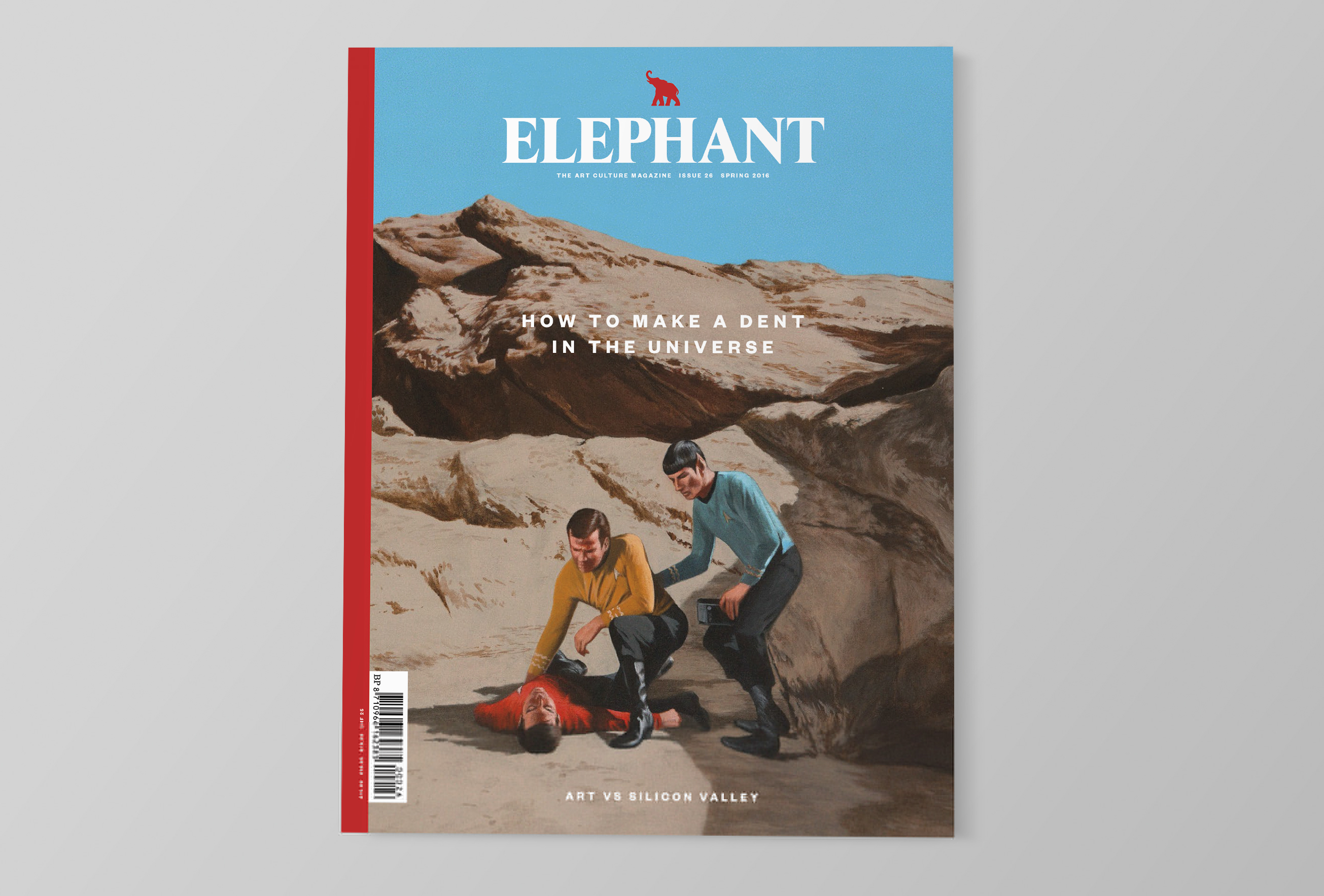
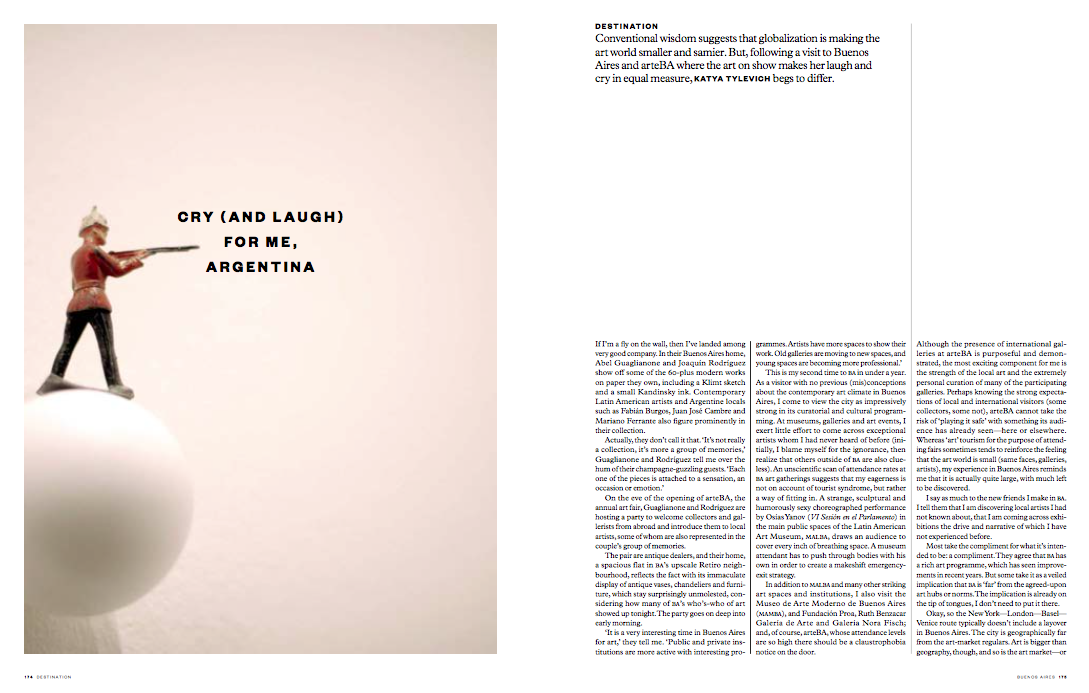
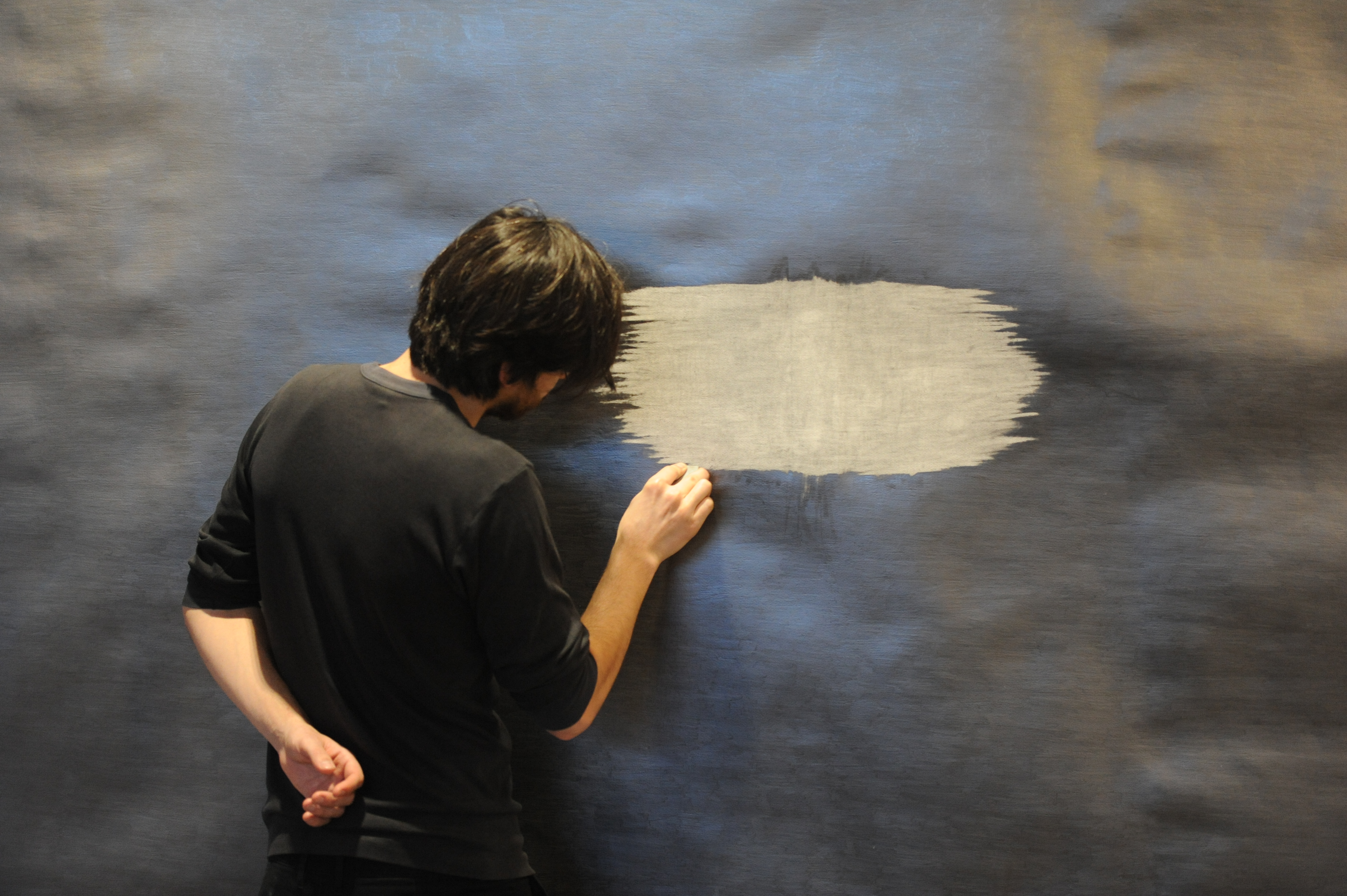
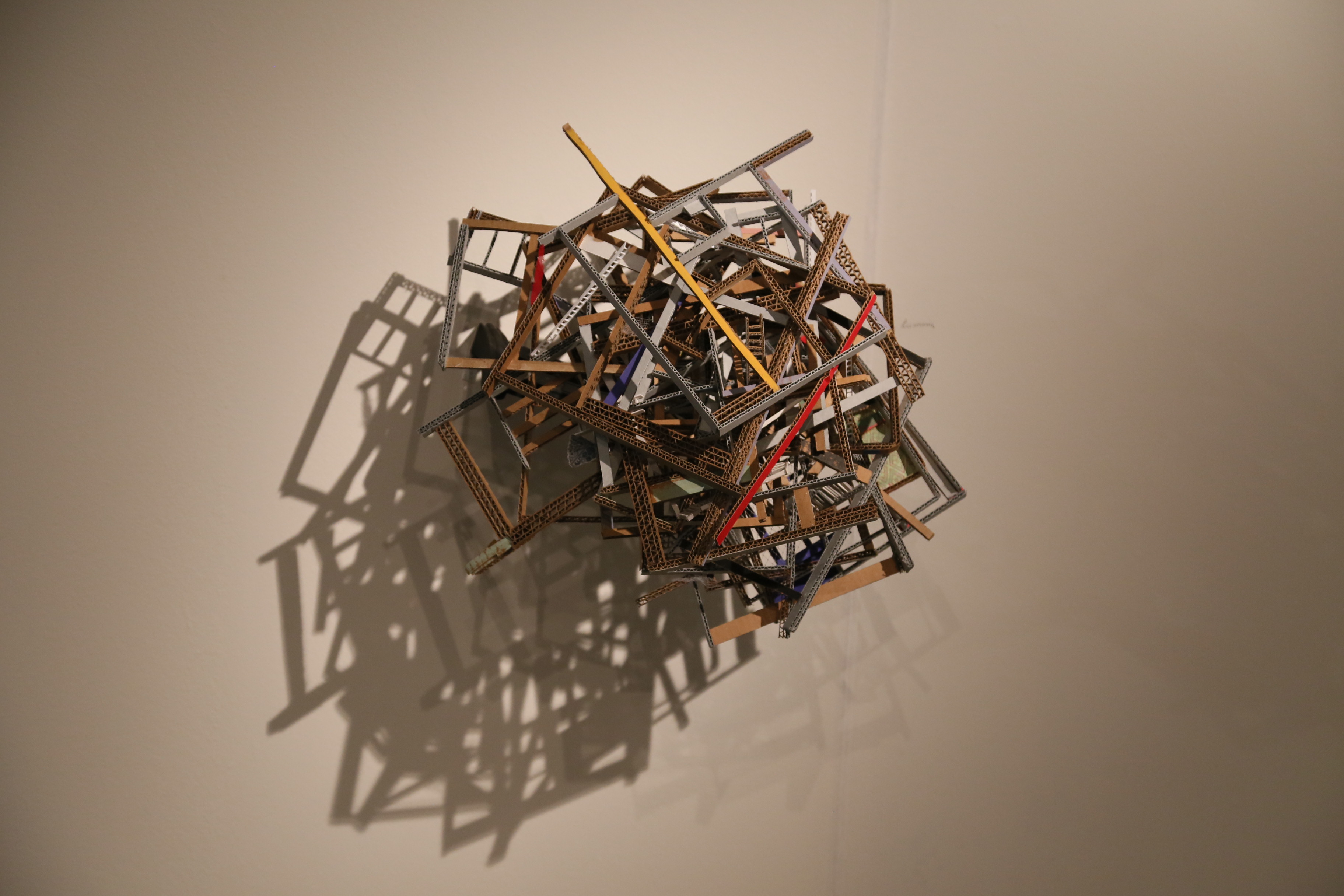

Mauricio Ianês O Escritor 2013 Vermelho
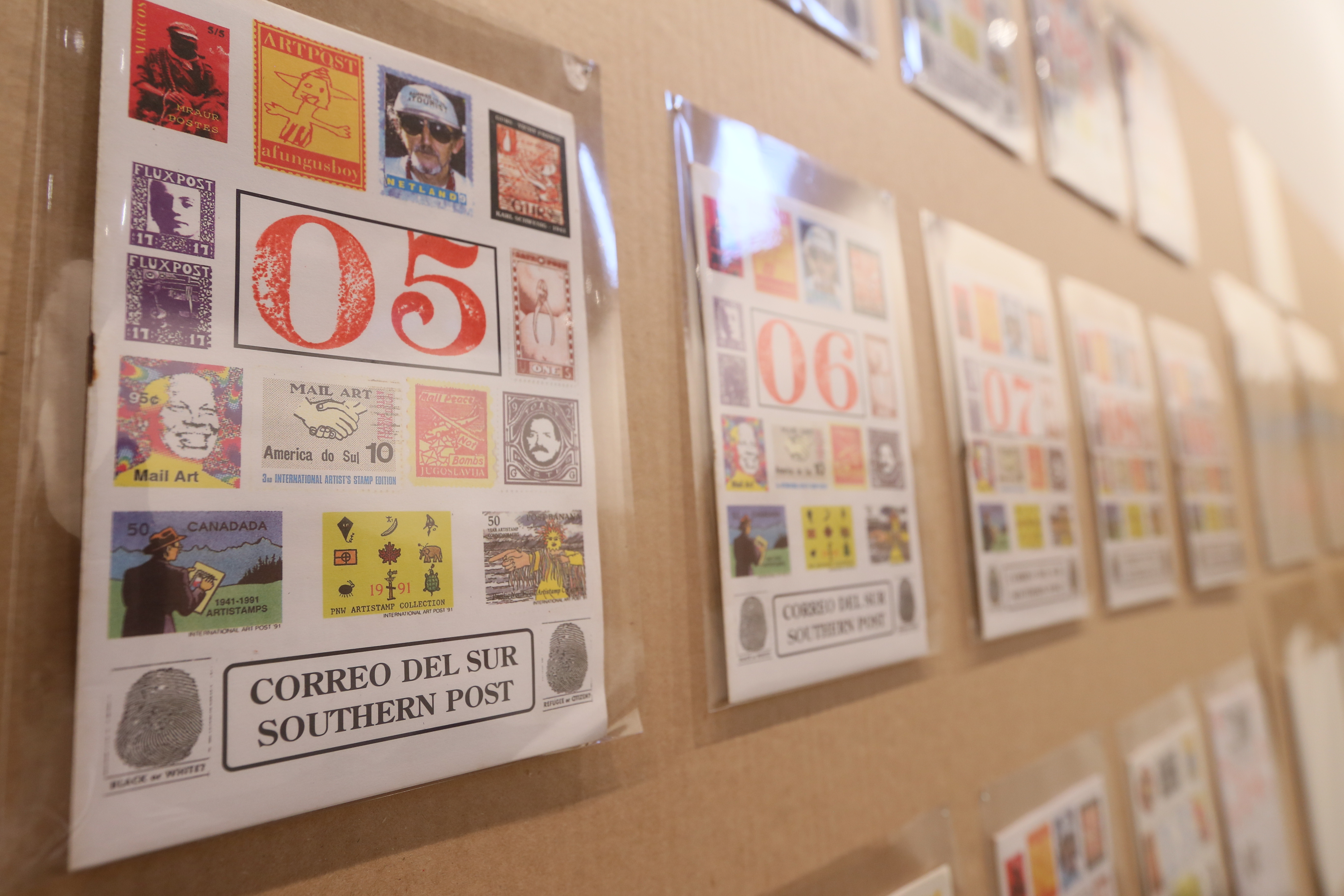
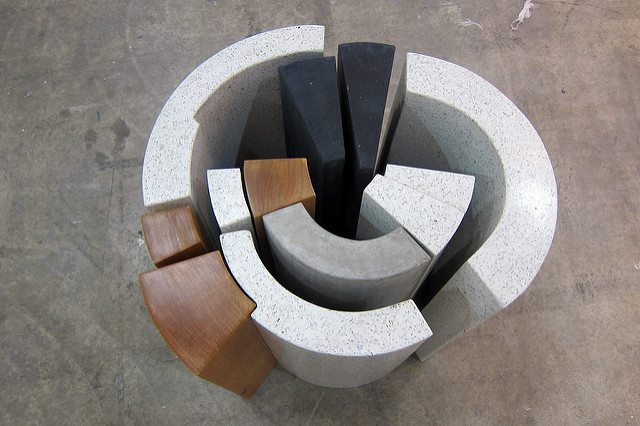
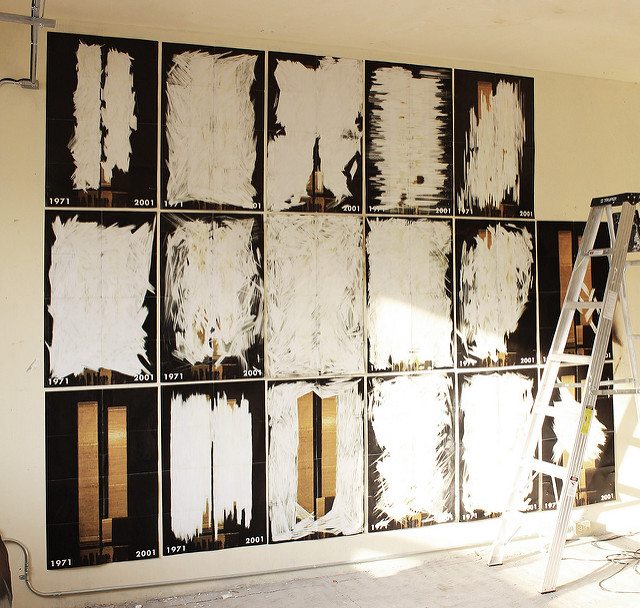
Mauro Giaconi Impermanencia, 2015. Goma de borrar sobre pósters. Dimensions variable





